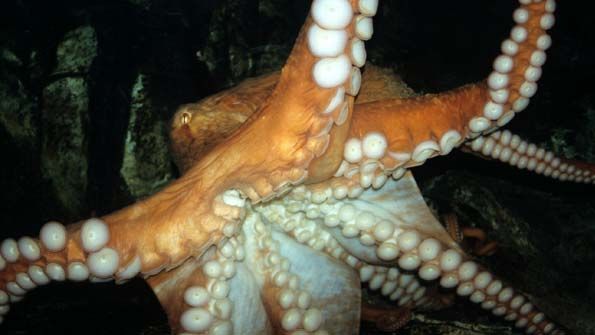
Photo: Photograph by Neta Degany (iStockphoto.com)
FRIGID WATERS surge through the Strait of Juan de Fuca, defining a maze of islands and flooding the remains of ancient fjords to form the unique waterways of the Salish Sea and Puget Sound.
Flanked by the jagged Olympic Mountains to the west, and the Cascade Range to the east, Puget Sound remains protected from the storms of the North Pacific Ocean and offers amazing opportunities for scuba divers. The water here is cold, about 45 degrees regardless of the season, and the tidal currents can run like mountain rivers: twice a day nearly 1.5 cubic miles of North Pacific water is exchanged through the tides. With a Sound so nutrient rich that it is home to a diverse population of marine creatures—like the Giant Pacific Octopus with its 14-foot arm span, the adventurous moray eel, and small, brightly colored nudibranchs that crawl along broad leaves of ribbon kelp—it’s no wonder Jacques Cousteau claimed these algid, dark waters among his favorite. Here are a few sites that make for a great underwater tour.
THE OLYMPIC PENINSULA There’s no shortage of spectacular shore dives here. Salt Creek Recreation Area, 16 miles west of Port Angeles, harbors eerie kelp forests. The clear, fresh waters of Lake Crescent—where visibility can be up to 100 feet—are popular among divers looking to go deep.
HOOD CANAL This long finger of water is home to the Giant Pacific Octopus. Octopus Hole, 39 miles north of Olympia, is a favorite among those looking for an encounter with these incredible creatures. Further up Highway 101, Pulali Point offers three great beach entries and moray eel, which will eat crab straight from your hand.
PUGET SOUND Several wrecks and an old dry dock provide artificial reefs for a host of wildlife at Edmonds Underwater Park, 17 miles north of Seattle, a marine sanctuary where lingcod grow to an alarming size. For a south Sound dive, try Tacoma’s Titlow Beach where a piling breakwater is covered with plumose anemone— one of the tallest anemone in the world. —MARK COOPER





